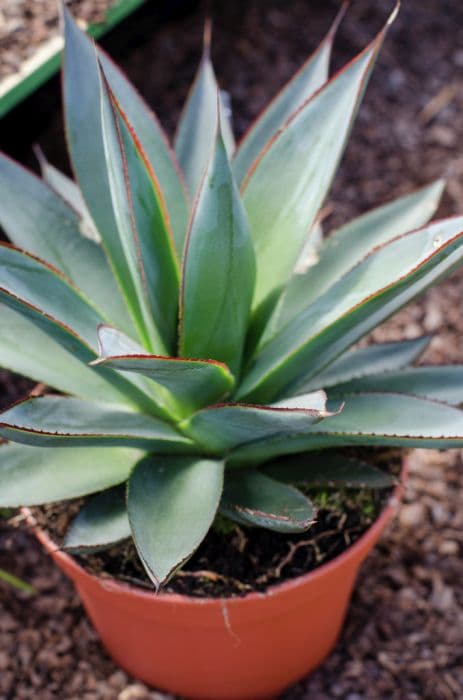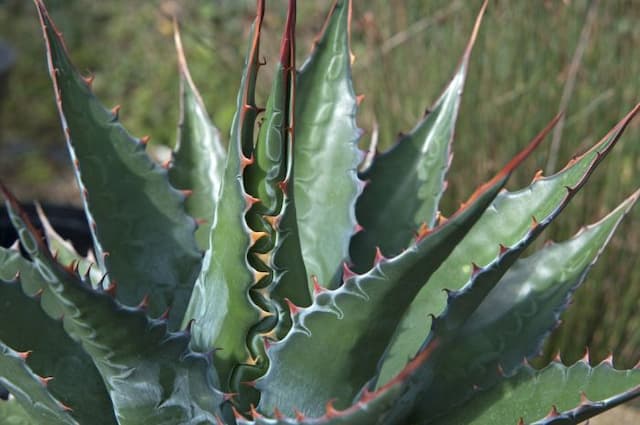Pineapple lily 'Gsalipol' Eucomis Nani = 'Gsalipol' (PBR) (Aloha Lily Series)

ABOUT
[Nani] is a bulbous perennial to 30cm, producing a rosette of bright green, arching, lance-shaped leaves. In late summer to early autumn, pale green upright stems carry spires of pale, dusky pink, star-shaped flowers, topped with a cluster of pale green, leaf-like bracts
About this plant
 Names
NamesFamily
Asparagaceae.
Synonyms
Aloha Lily, Pineapple Lily, Dwarf Pineapple Lily, Miniature Pineapple Lily.
Common names
Eucomis 'Nani', Eucomis comosa 'Nani'
 Characteristics
CharacteristicsLife cycle
Perennials
Foliage type
Deciduous
Color of leaves
Green
Flower color
Varies
Height
1-2 feet (30-60 cm)
Spread
1 foot (30 cm)
Plant type
Bulb
Hardiness zones
8
Native area
South Africa
Benefits
 General Benefits
General Benefits- Attractive Flowering – Produces beautiful, exotic-looking blooms that are striking in gardens and as cut flowers.
- Drought Tolerance – Once established, they have good resistance to periods of dry weather, reducing the need for frequent watering.
- Low Maintenance – Doesn’t require much care beyond basic watering and feeding, making it ideal for busy gardeners.
- Compact Growth – Well-suited for small gardens or containers due to its smaller size compared to other Eucomis varieties.
- Long Blooming Period – Flowers last for several weeks throughout the summer, providing a long-lasting display.
- Pollinator Friendly – Attracts bees, butterflies, and other beneficial insects, supporting biodiversity.
 Medical Properties
Medical PropertiesThis plant is not used for medical purposes.
 Air-purifying Qualities
Air-purifying QualitiesThis plant is not specifically known for air purifying qualities.
 Other Uses
Other Uses- Photography Prop - The striking appearance of the pineapple lily can be used as a unique focal point in photoshoots, especially in botanical themes.
- Educational Tool - Botany students can study the pineapple lily to learn about plant structures and the unique floral arrangements of the Asparagaceae family.
- Craft Inspiration - The distinct shape and texture of pineapple lily flowers make them an excellent subject for arts and crafts, including painting and drawing.
- Floral Arrangements - Pineapple lilies can be used in unconventional floral arrangements, adding an exotic touch to bouquets or table centerpieces.
- Culinary Garnish - Although not commonly used for eating, the flowers could potentially serve as a dramatic garnish for special dishes at high-end restaurants.
- Insect Attractant - Planting pineapple lilies in the garden can attract pollinators such as bees and butterflies, which is beneficial for garden biodiversity.
- Garden Ornamentals - The pineapple lily can be used to create a point of interest in rock gardens or other landscaping arrangements due to their unique appearance.
- Theme Gardens - These plants can be utilized in themed gardens, like tropical or exotic gardens, to provide an authentic atmosphere.
- Container Gardening - Pineapple lilies are suitable for pots and containers, making them a versatile choice for balconies and small spaces.
- Cultural Symbols - The pineapple lily can be incorporated into cultural ceremonies or celebrations that appreciate unique and exotic flora.
Interesting Facts
 Feng Shui
Feng ShuiThe Pineapple Lily is not used in Feng Shui practice.
 Zodiac Sign Compitability
Zodiac Sign CompitabilityThe Pineapple Lily is not used in astrology practice.
 Plant Symbolism
Plant Symbolism- Exotic Beauty: The Eucomis, commonly known as the Pineapple Lily, has an exotic appearance that symbolizes unique and striking beauty resembling a tropical pineapple in bloom.
- Prosperity: The lush foliage and robust flowering spikes can represent growth and abundance, making the Pineapple Lily a symbol of prosperity and material wealth.
- Welcome and Hospitality: Since it resembles the pineapple, which is a universal symbol of welcome and hospitality, the Pineapple Lily can also be associated with these virtues.
- Patience and Longevity: Given its perennial nature and the fact that it returns year after year, the Pineapple Lily can represent patience, endurance, and the hope of long-lasting success.
- Transformation and Change: The Pineapple Lily's life cycle, from foliage to flower, can symbolize the nature of transformation and positive change.
 Water
WaterThe Pineapple Lily, as Eucomis 'Aloha Nani' is commonly known, requires consistent moisture, particularly during its active growing season in the spring and summer. Water the plant deeply once a week, providing about a gallon of water to ensure proper hydration. During the winter, reduce watering frequency to every two to three weeks, as the plant enters a dormant period. Always allow the top couple of inches of soil to dry out between watering sessions to prevent root rot.
 Light
LightPineapple Lily thrives in full sun to partial shade. For optimal growth, place the plant where it can receive at least six hours of sunlight daily. If grown indoors, a south-facing window is ideal, but ensure the plant is protected from the harsh afternoon sun, which might scorch the leaves.
 Temperature
TemperatureThe Pineapple Lily prefers warm temperatures and can tolerate a range from 60 to 80 degrees Fahrenheit. However, the ideal growing temperature is around 70 degrees Fahrenheit. It should not be exposed to temperatures below 50 degrees Fahrenheit, as cold conditions can damage the plant.
 Pruning
PruningPineapple Lily benefits from pruning primarily to remove spent flowers and yellowing leaves to maintain a neat appearance and encourage more blooms. Prune after flowering by cutting the flower stalk at the base, and trim away any yellow or dead leaves as needed throughout the year. The best time for major pruning is early spring, just before new growth starts.
 Cleaning
CleaningAs needed
 Soil
SoilPineapple lily prefers well-draining soil with a pH between 6.0-7.0. A mix of two parts loam, one part peat, and one part sand or perlite can provide the necessary drainage and aeration. Regularly check soil moisture.
 Repotting
RepottingPineapple lilies should be repotted every 2-3 years. Repot in spring before the growing season. Ensure the new pot is slightly larger to accommodate root growth.
 Humidity & Misting
Humidity & MistingPineapple lily thrives in moderate humidity levels. Ideal humidity ranges between 40-60%. Avoid overly dry environments and use a pebble tray or humidifier if necessary.
 Suitable locations
Suitable locationsIndoor
Provide bright, indirect light and keep soil moist.
Outdoor
Plant in spring after frost, in well-draining soil and full sun.
Hardiness zone
7-10 USDA
 Life cycle
Life cycleAloha Lily 'Gsalipol' begins its life as a bulb dormant over the winter months. In spring, the bulb initiates growth, sending up a rosette of strappy leaves, followed by a central flower spike characterized by star-shaped blossoms and leafy bracts. As the flowering period progresses through the summer, each bloom on the spike may last several weeks before fading. After flowering, seed pods may form if pollination has occurred, which then mature and can be dispersed for propagation. When the growing season comes to an end, the leaves yellow and die back, and the plant enters a period of dormancy to conserve energy for the next season. Each year, the bulb enlarges and can produce offsets, leading to clumping and increase in the size of the plant colony.
 Propogation
PropogationPropogation time
Spring to Summer
Propogation: The most popular method of propagating the Eucomis 'Gsalipol', commonly known as the Pineapple Lily, is through division. This is typically done in late winter or early spring before the plant resumes active growth. To propagate by division, carefully dig up the bulbous plant, handling it gently to minimize damage. The bulb will often have smaller offset bulbs attached; these can be separated from the main bulb with a sharp knife or by hand. Once separated, the offsets should be immediately replanted in well-draining soil with the top of the bulb slightly exposed. Water the new plantings thoroughly to settle the soil around the bulbs and initiate root growth. With proper care, the offsets will develop into mature plants over the course of the growing season.









